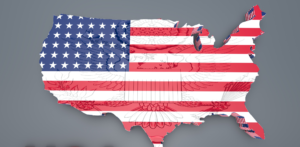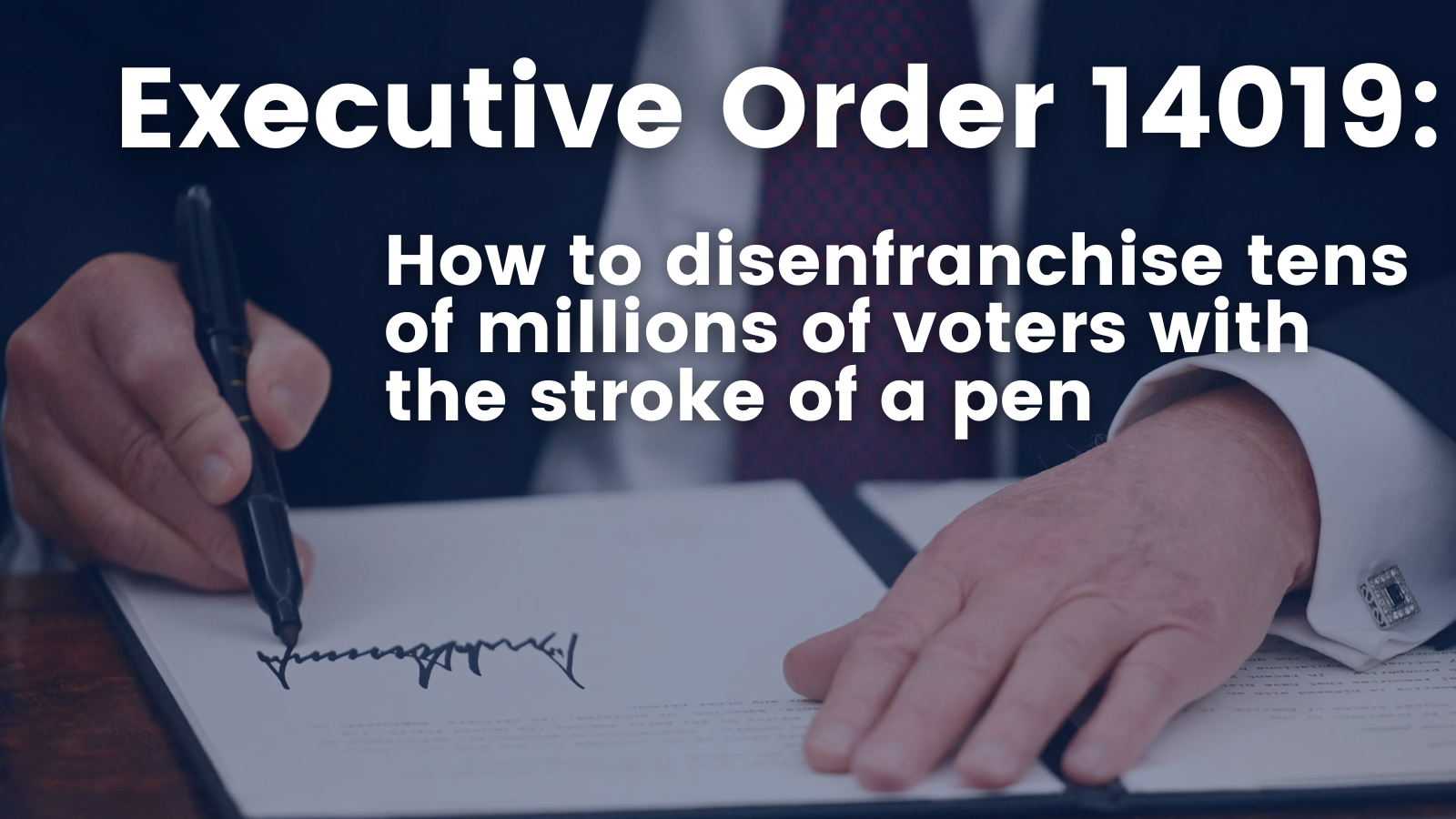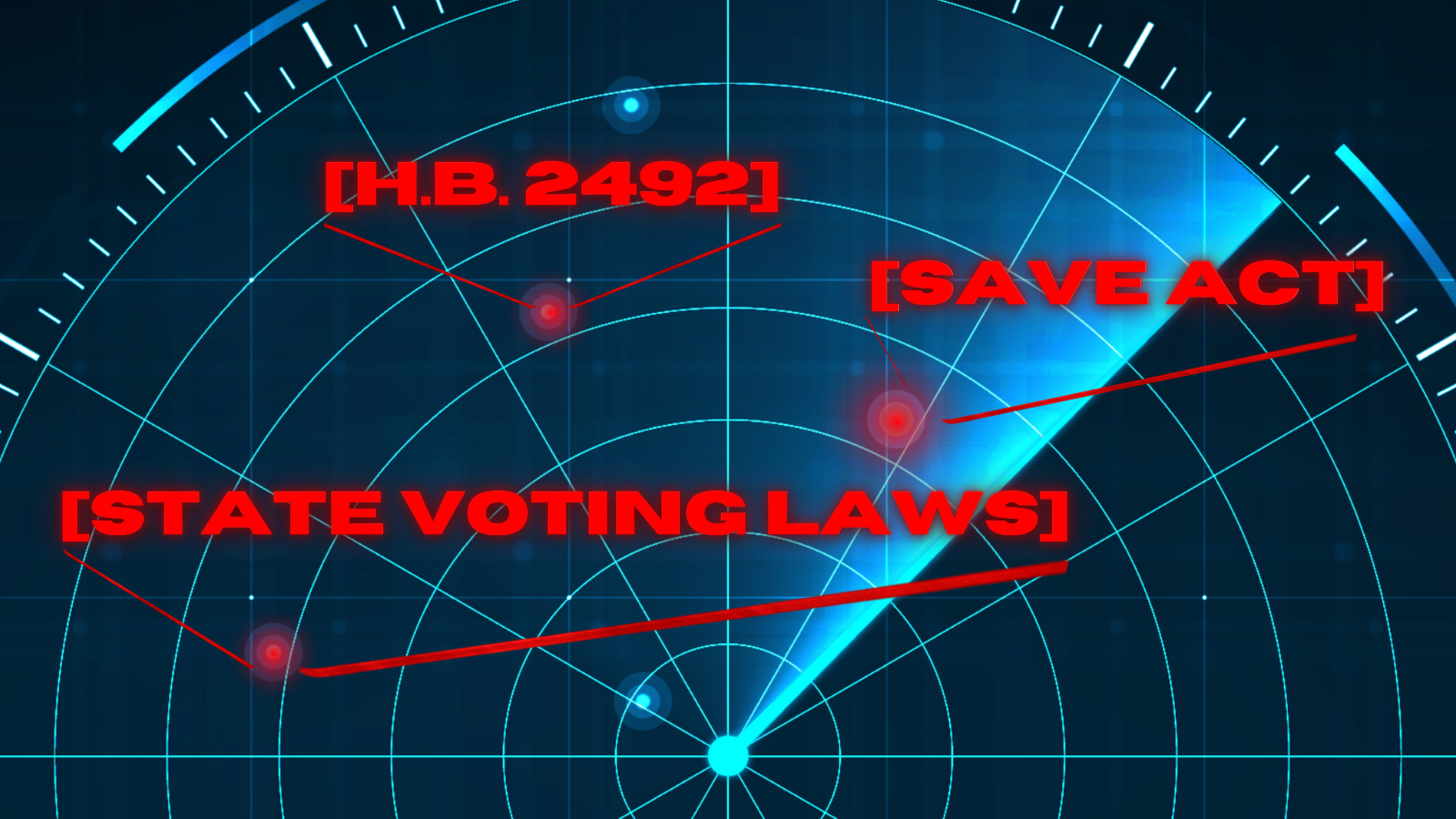 Millions of eligible voters across the nation are unable to participate in our elections because of a problem with their voter registration or a missed deadline. The numbers change depending on the election cycle and other factors, but however you do the math, it’s clear that millions of our citizens are prevented from voting due to the bureaucracy of our various state voter registration systems.
Millions of eligible voters across the nation are unable to participate in our elections because of a problem with their voter registration or a missed deadline. The numbers change depending on the election cycle and other factors, but however you do the math, it’s clear that millions of our citizens are prevented from voting due to the bureaucracy of our various state voter registration systems.
There were 117,176,500 eligible voters that did not participate in the 2018 midterm election (U.S. Elections Project, see related spreadsheet). This includes registered and unregistered voters. Many of those nonvoters just forgot, were too busy, or were not interested, but newly-released Census survey data points out that 3.1% of nonvoters cited a problem with their registration as the reason they didn’t vote (Census Table 10). As a result, we can estimate that 3.6 million voters sat out of the 2018 elections because of a problem with their registration.
Another way to estimate the number of voters who are barred from participating due to a “registration problem” is by looking at the number of voters who would participate if every state enacted Same Day Registration (SDR), a policy that allows voters to register of fix a problem with their registration when they go to vote. In an article from the Center for American Progress, the author used the projected five percent turnout advantage of Same Day Registration states (National Council on State Legislatures) to estimate that 4.8 million voters sat out of the 2016 election due to registration issues that could have been fixed if they lived in a Same Day Registration state.
It’s possible that the number of voters who would participate if registration were not an issue is even higher. Though the number has likely changed some since, there were 51 million eligible voters who were not registered to vote in 2012 (Demos). Of course, many of those unregistered voters have no intention of voting, which is why they are not registered. Others however were never asked or don’t know how. What would happen if they were all registered? Or if registration was simply a non-issue? When Oregon instituted Automatic Voter Registration in 2016, 36% of those who were registered for the first time through the policy turned out to vote (Demos). That was a lower turnout rate than the state as a whole, but nonetheless impressive! If all unregistered voters nationwide were suddenly registered and we got just half the turnout rate Oregon saw for first-time registrants, that would be 9 million new voters.
Whatever numbers you use, it’s clear that cutting through the bureaucratic red tape of our voter registration systems must be a priority. Policies like Same Day Registration and Automatic Voter Registration should be the foundation. But we also need to build the social infrastructure that can leverage face-to-face interactions with potential voters who have been sidelined in our political process, help them get registered, and ultimately, engaged in the political process as active voters.




